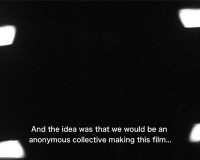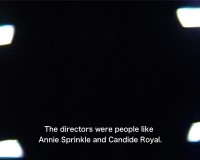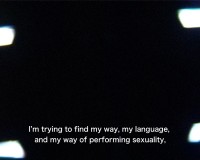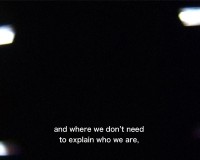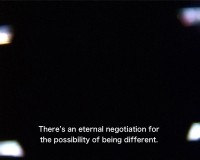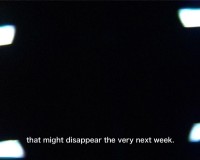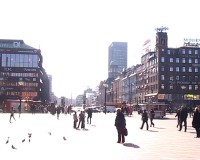Female Fist
20min loop. Ratio 4:3. DV video PAL. Kajsa Dahlberg 2006
With reference to groups like the Zapatistas, the writer’s collective Wu Ming, the illusive identity of Luther Blissett, as well as many other collective and/or clandestine groups who mask their faces in order to become politically visible, the video Female Fist consist of an interview with an activist from the Copenhagen queer feminist community. Shot with the lens-cap left on the camera, the interviewee begins by describing the process of making a porn film in the lesbian activist milieu. This porn film project was an attempt to produce “queer” representations of sexuality and was to be distributed between women in a ”system of trust” that included the restriction that it could not be shown to any men. About halfway into the video she goes on to speak in more general terms about the creation of separatist rooms and about the possibilities for being different in today’s society. The video opens and concludes with a silent scene from a public square in Copenhagen.
I became involved with this activist group because I was interested in the way they worked politically, whilst attempting to stay outside of already existing political frameworks. In their struggle to fight repressive structures they are defining themselves in primarily negative terms by saying “We are not anarchists”, “We are not feminists”, “We are not Marxists” etc. I was interested in their attempt to create an identity for themselves, while simultaneously avoid being defined from the outside. For this project, the notion of knowing what you are NOT becomes the starting point for an urge to create new identities, new imagery, new languages, and ultimately the possible means to change residing structures.
I was interested in how one could, both formally as well as ideologically, make a film about a group whose main objective is the desire to resist representation. What images could be produced while struggling to avoid recognition as such? The use of strategic separatism, as well as the resistance to being defined by what one sees as a repressive structure, reflects a larger concern about the possibility to produce counter images to normalizing narratives mediated through mainstream TV and cinema.
